How to Make an AI Drake Song Using SendFame
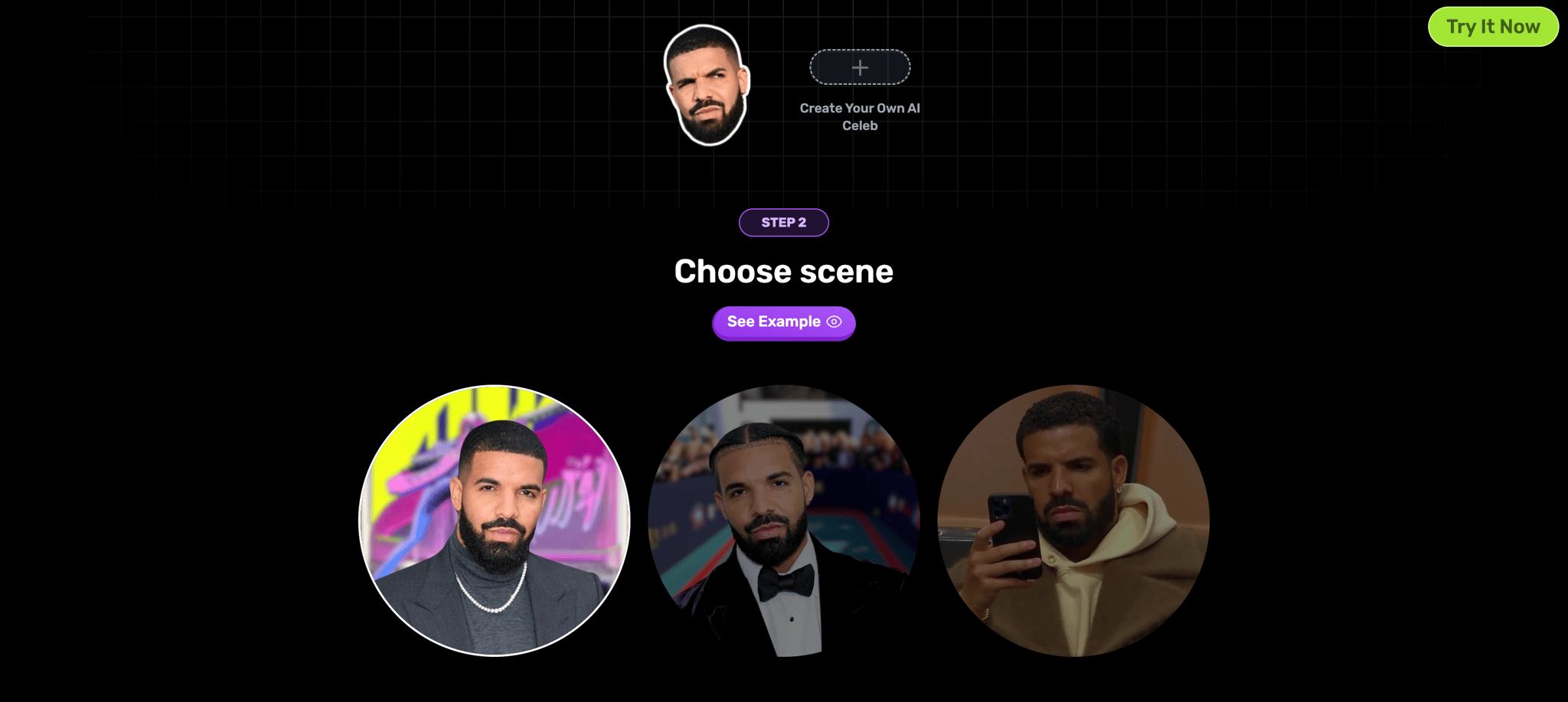


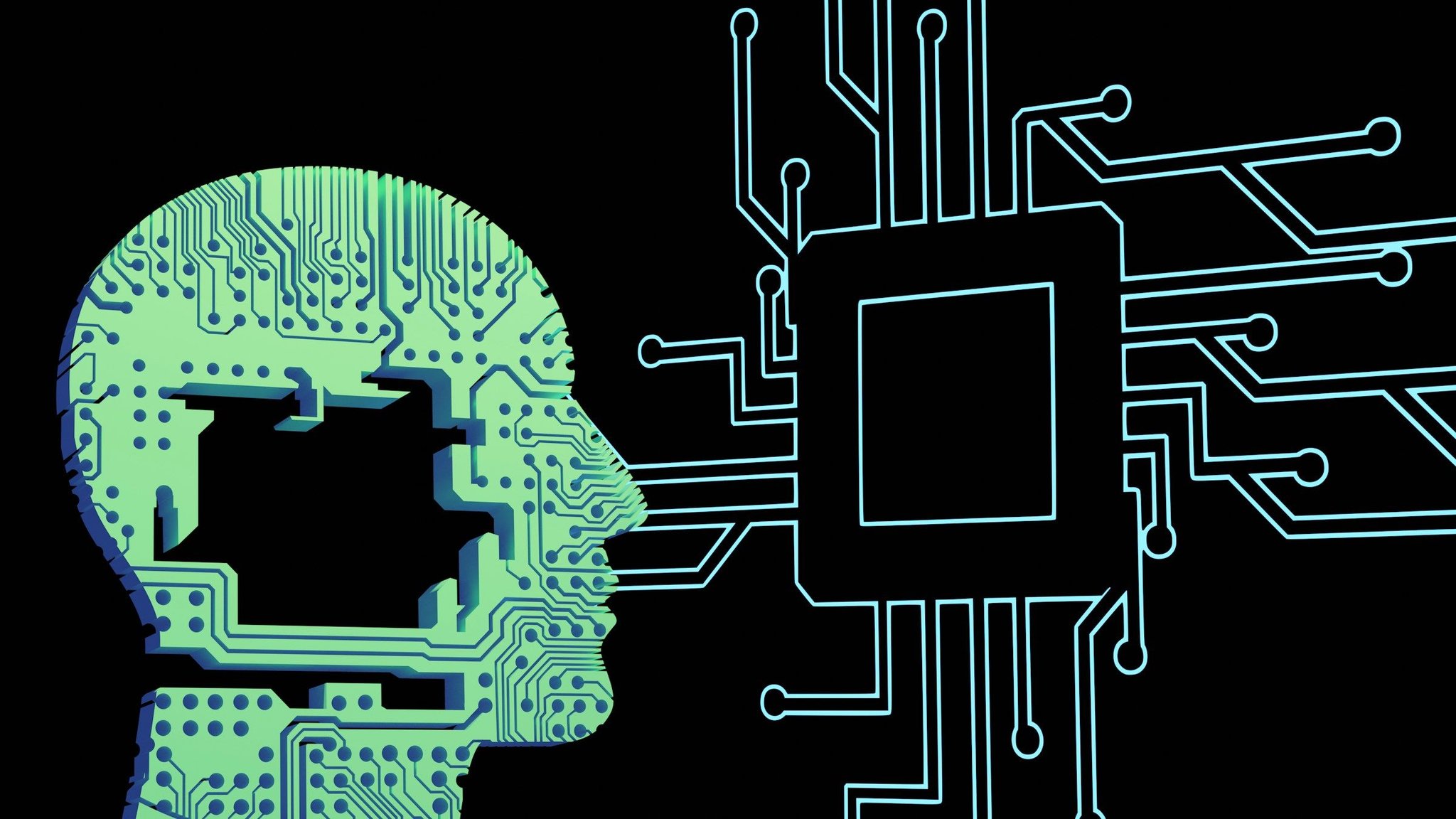
Discover 12 key benefits of AI for students—save time, study smarter, and boost your academic performance with smart tech.
Consider you’re in a creative rut. You love music but are short on inspiration and struggling to write a song, cover a favorite tune, or develop ideas for a music-related project. You’ve heard about AI music generators and how they can help tackle these tasks, but you aren’t sure how to make AI music covers.
Can AI make music? How does it work? What are its possibilities and limitations? And is it safe to use AI-generated songs? You're in the right place if you’ve asked yourself these questions. But, How to Make AI Music Covers? This guide will help you understand how AI creates music and get you comfortable exploring AI-generated music, including how to make your own covers. SendFame’s AI content maker is a great tool to help you achieve these objectives, including how to make AI music covers. Our solution can help you beat that creative block by generating catchy, original songs in minutes.
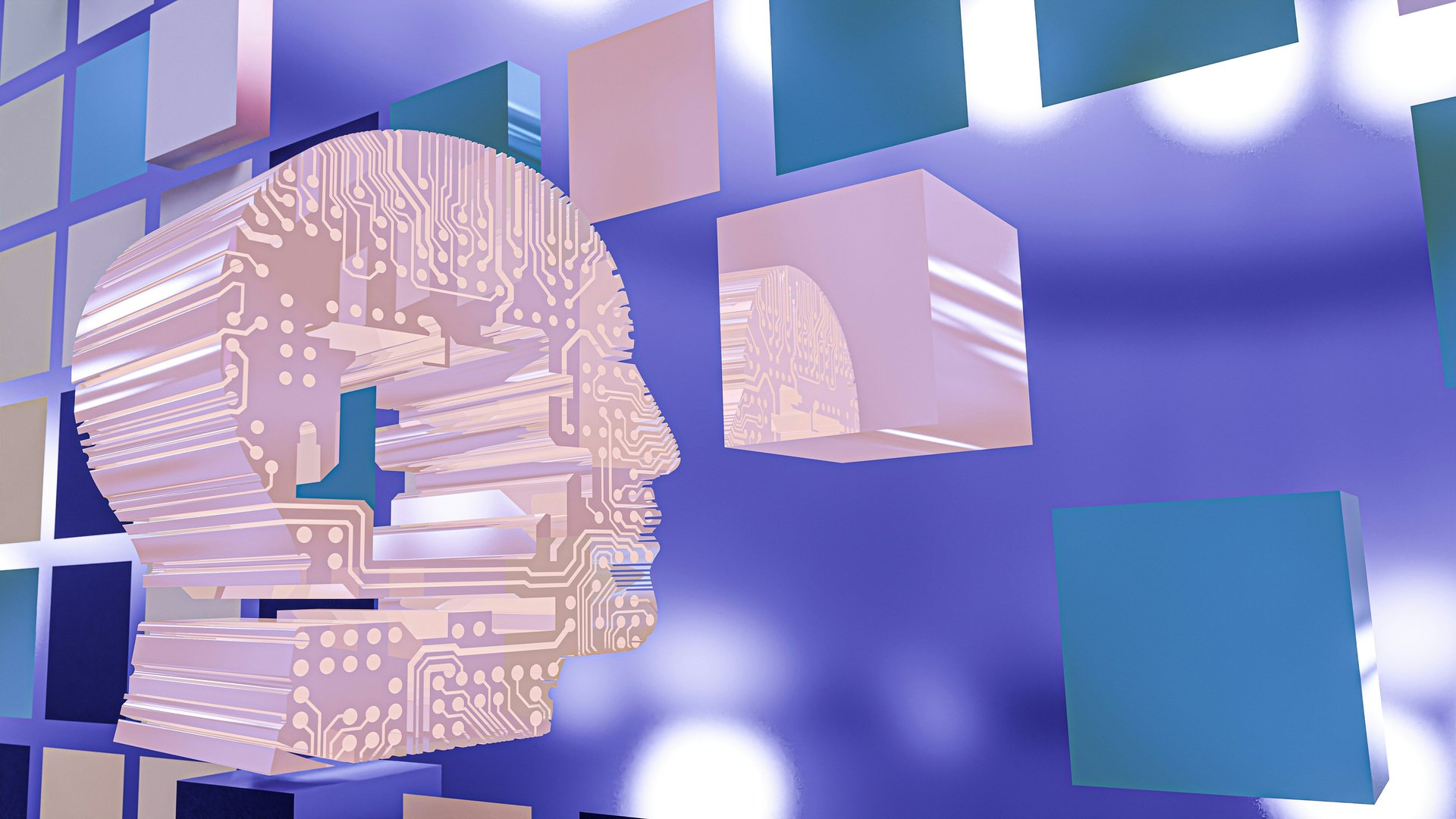
Whether artificial intelligence can create music has gained significant attention as technological innovations increasingly intersect with artistic expression. Fundamentally, AI music generation relies on sophisticated computer algorithms that produce melodies, harmonies, and rhythms.
These compositions often sound strikingly close to those crafted by human musicians. Although the underlying process involves intricate programming and extensive data analysis, the result is frequently a piece of music capable of stirring emotions and sparking creativity.
This convergence of machine-generated sounds and human-like artistry challenges traditional musical authorship and notions of creativity.
Today, AI’s function in music is less about supplanting human artists and more about augmenting their creative potential. Many musicians and producers use AI-powered tools to experiment with fresh ideas, break through creative blocks, or quickly generate background scores.
For instance, platforms like SendFame demonstrate how AI-composed music can be effortlessly woven into various multimedia projects, offering content creators access to unique, ready-made tracks without needing costly or time-consuming production efforts. This practical use of AI underscores its role as a valuable assistant in the music industry rather than a direct rival to human talent.
Despite AI's remarkable progress in composing music, it still faces inherent limitations. While AI can replicate musical styles and patterns it has been trained on, it lacks the deep emotional insight and lived experience that human composers bring to their craft.
Music often serves as a vessel for cultural narratives, personal stories, and emotional expression, elements that AI can imitate but never genuinely experience. This fundamental difference ensures that human creativity remains at the heart of music creation. AI is a complementary tool designed to inspire and support rather than replace human ingenuity.
The increasing use of AI in music also sparks essential conversations about originality and intellectual property rights. Since AI models generate music by learning from vast collections of existing works, questions about copyright infringement and fair ownership have become more pressing.
Services incorporating AI-generated music, such as SendFame, address these concerns by guaranteeing their tracks are original and legally cleared. This approach is crucial for creators who want to leverage AI’s efficiency while avoiding potential legal pitfalls associated with unauthorized use of copyrighted material.
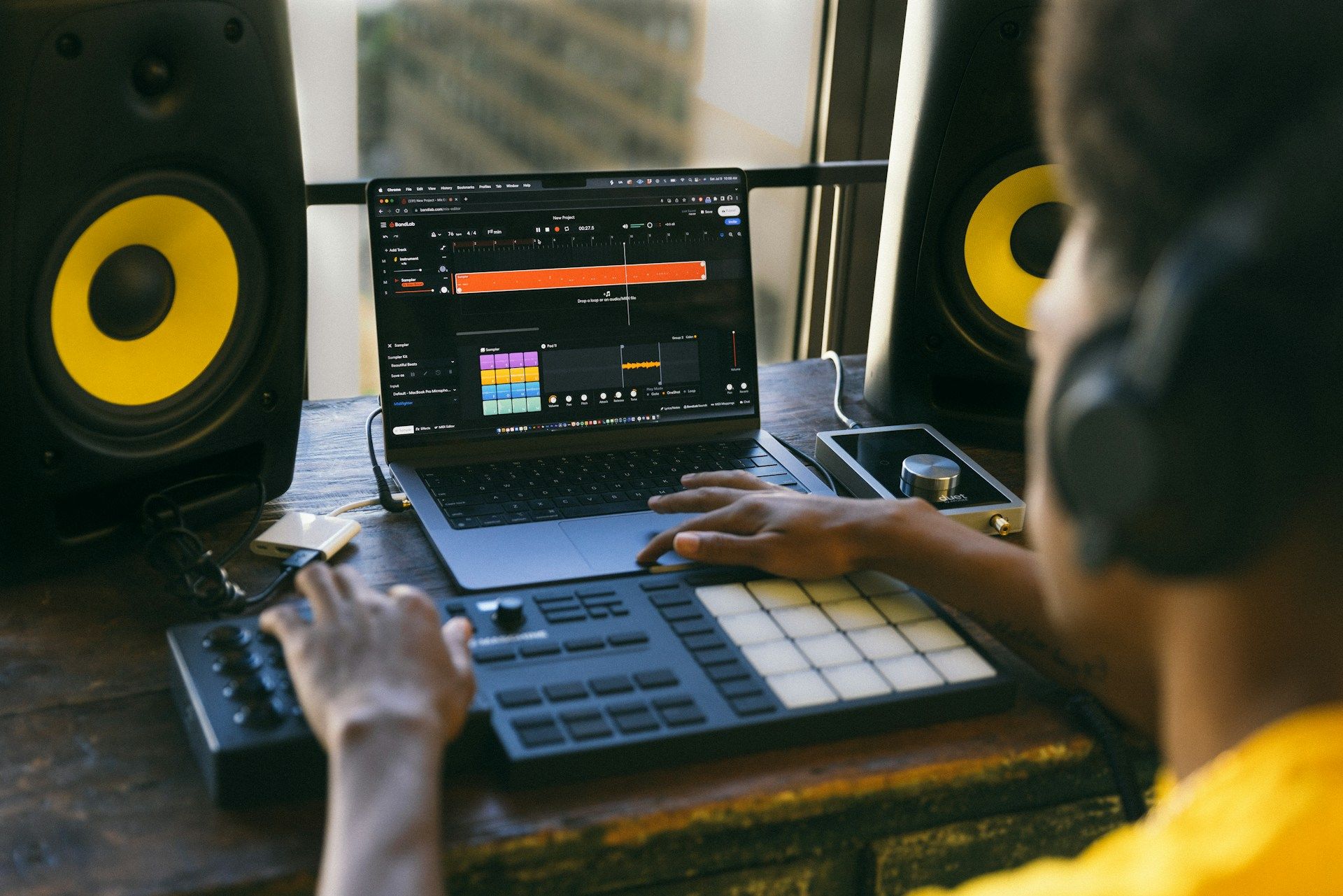
Artificial intelligence (AI) transforms music creation by leveraging advanced neural networks, deep learning, and generative models to compose, produce, and even master music. This transformation reshapes the music industry, enabling faster production, new creative possibilities, and personalized music experiences.
Neural networks and deep learning form the backbone of AI’s ability to understand and generate music. These systems mimic the human brain’s capacity to detect and learn from patterns, enabling AI to analyze vast collections of musical data.
Deep learning models develop a layered comprehension of music's fundamental components by processing examples of melodies, harmonies, rhythms, and stylistic nuances. This comprehensive grasp allows AI to produce coherent compositions that align with specific musical styles, making the generated pieces feel authentic and emotionally resonant.
The training process involves feeding the neural networks large music datasets, which helps the AI recognize complex relationships between notes and musical structures over time. This capability is crucial because music is inherently temporal, relying on sequences and timing to create meaningful expressions.
Deep learning models refine their understanding through iterative learning and adjustment, improving their ability to predict and generate sequences that flow naturally. As a result, AI can compose music that captures the essence of human creativity while maintaining technical accuracy and stylistic consistency.
Generative models such as Generative Adversarial Networks (GANs) and Recurrent Neural Networks (RNNs) play pivotal roles in AI-driven music creation. GANs operate through a dual-network system where one network, the generator, creates new music samples, and the other, the discriminator, evaluates these samples against real music to judge their authenticity.
This adversarial process pushes the generator to improve continuously, producing music that increasingly resembles genuine compositions. Over time, the generator learns to craft melodies and harmonies that are both innovative and convincing, making GANs a powerful tool for creative music synthesis.
On the other hand, RNNs, especially Long Short-Term Memory (LSTM) networks, excel at handling sequential data, which is essential for music’s progression over time. These networks can remember and utilize information from previous time steps to influence future outputs, enabling them to effectively model the temporal dependencies in music.
RNNs are particularly suited for generating melodies and rhythms that evolve logically and musically. Together, GANs and RNNs provide complementary strengths- GANs focus on the quality and realism of generated music, while RNNs ensure temporal coherence and continuity in the compositions.
AI music generation relies heavily on training with vast and varied musical datasets encompassing various genres, instruments, and stylistic elements. These extensive collections provide the raw material from which the AI learns the fundamental building blocks of music, including chord sequences, rhythmic patterns, and melodic contours.
By analyzing thousands of hours of audio and symbolic music data, the AI develops a deep understanding of how different musical components interact and evolve. This comprehensive exposure enables the model to internalize the nuances of musical expression found across cultures and eras, equipping it to craft compositions that resonate with human-like creativity.
Training on such large datasets is crucial for the AI’s ability to produce original and stylistically coherent music. As the model digests diverse examples, it learns to replicate familiar patterns and combine elements novelly, resulting in innovative blends of styles and genres.
This capacity to synthesize and reinterpret musical ideas allows AI-generated pieces to feel fresh and inventive, rather than mere imitations. Ultimately, the richness and diversity of the training data allow AI to push creative boundaries, offering new possibilities for music creation that bridge tradition and experimentation.
The influence of artificial intelligence in music creation is expanding at an unprecedented pace, reshaping how artists and producers approach composition, production, and distribution. Around 60% of musicians incorporate AI tools into their workflows, whether for composing melodies, mastering tracks, or generating album artwork. This widespread adoption reflects AI’s growing role as a creative partner rather than just a technical aid.
The AI music market is projected to reach $6.2 billion by 2025, with expectations to surge dramatically to $38.7 billion by 2033. Within this, generative AI music alone is forecasted to hit $2.92 billion in 2025, underscoring the rapid commercialization and acceptance of AI-driven music generation technologies. Notably, the sophistication of AI-generated music has reached a level where 82% of listeners cannot distinguish it from human-created compositions, highlighting the technology’s maturity and potential to blend smoothly into mainstream music consumption.
This rapid growth is fueled by AI’s ability to accelerate music production processes. AI platforms like SendFame enable creators to generate entire songs or melodies within seconds, significantly shortening the creative cycle. AI platforms like SendFame allow artists and content creators to combine music generation with multimedia storytelling tools, helping them craft engaging and shareable content tailored for social media, marketing campaigns, and personal projects.
The integration of AI into music is not only transforming the creative landscape but also expanding opportunities for innovation and audience engagement worldwide. As AI continues to evolve, it is expected to complement human creativity by offering new ways to experiment with sound, style, and presentation. This will ultimately democratize music creation and broaden access to high-quality musical content across diverse platforms and audiences.
SendFame is a practical and accessible complement to cutting-edge AI music generation models like OpenAI’s Jukebox and Google’s MusicLM. By focusing on ease of use and multimedia integration, SendFame offers a streamlined platform designed for creators who want to produce fully finished songs quickly from simple text prompts. While Jukebox and MusicLM are primarily research-driven tools that generate raw audio with high complexity and fidelity, SendFame offers a streamlined platform designed for creators who want to produce fully finished songs quickly from simple text prompts.
This includes not only vocals, beats, and lyrics but also AI-generated music videos and celebrity-style video messages, making it ideal for social media creators, marketers, and individuals looking to craft engaging content without needing deep technical skills or extensive production knowledge. By combining music creation with video and celebrity impersonation features, SendFame provides a holistic creative environment that enhances user experience and content shareability.
Unlike the research-heavy AI models that often require significant computational resources and expertise, SendFame emphasizes speed, personalization, and multimedia output, enabling users to generate complete, ready-to-share pieces in minutes. Its AI Music Generator analyzes the tone and mood of text inputs to compose emotionally resonant songs tailored to user preferences. At the same time, its video tools automatically produce visuals that sync with the music’s rhythm and atmosphere.
Additionally, SendFame’s celebrity AI voice and video generators add a unique layer of entertainment and personalization by allowing users to create messages that mimic famous personalities. This blend of music, video, and celebrity AI content makes SendFame a versatile and user-friendly platform that complements advanced AI research models by democratizing music and multimedia creation for a broader audience. Release your creativity with SendFame!
Create stunning AI celebrity videos, music tracks, and images in seconds that will wow your audience. Generate hyper-realistic videos of your favorite celebrities delivering personalized messages, craft original songs with professional-quality vocals, and transform static images into dynamic videos—all with just a few clicks. No technical skills required—just your imagination! Join 130,000+ users already creating viral-worthy content. Try SendFame today and turn your creative ideas into reality instantly.
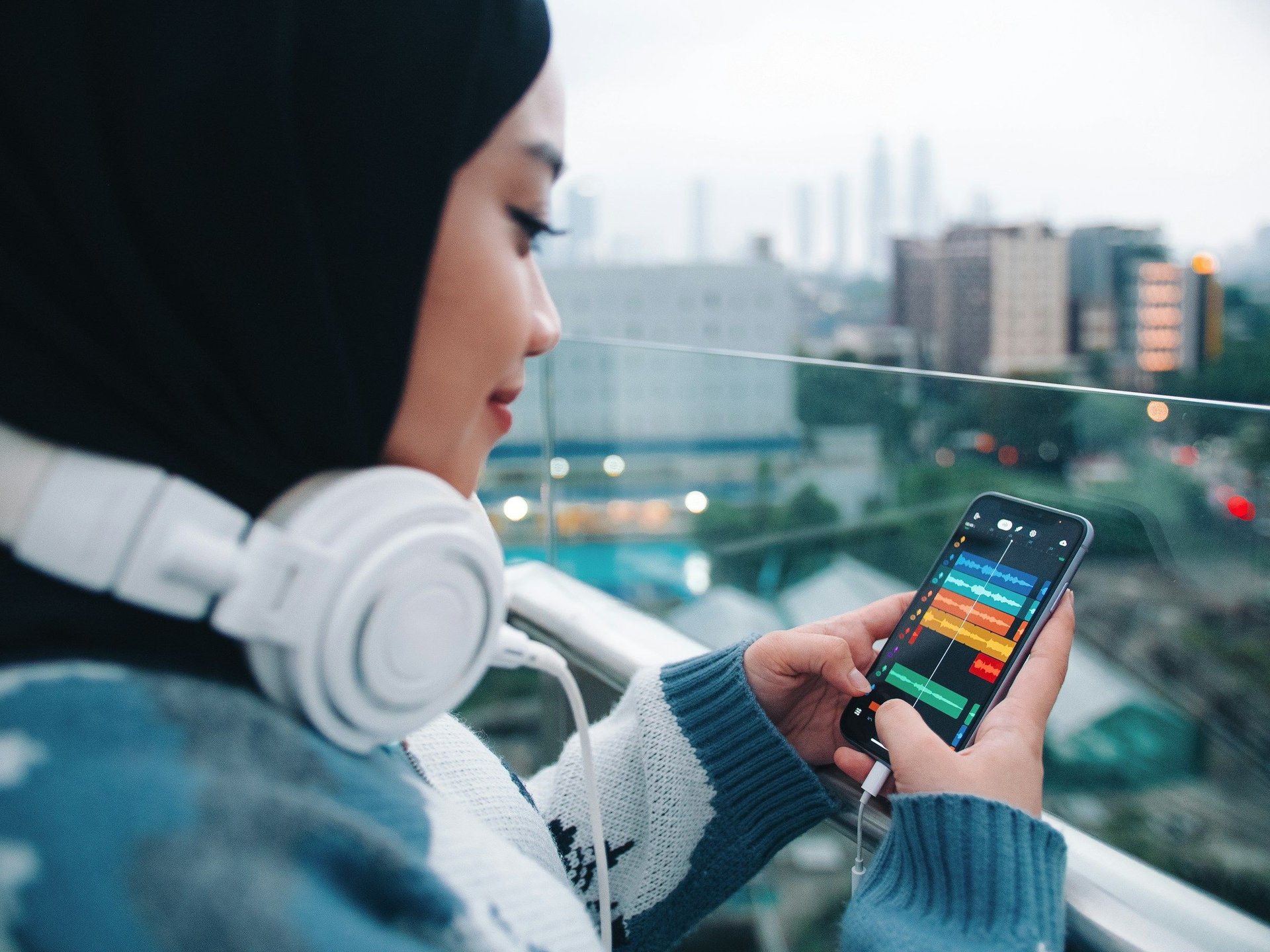
Artificial intelligence has transformed the pace at which music can be created, significantly shortening the time required for various stages of production. Traditionally, crafting a song—from composing melodies and arranging instrumental layers to mixing and mastering—could take days or even weeks, especially when done manually by artists and producers.
AI-powered tools now streamline these processes by automating complex tasks such as generating harmonious chord progressions, suggesting optimal song structures, and applying mixing adjustments tailored to specific genres. This acceleration speeds up the workflow and reduces the cognitive load on creators, allowing them to bypass repetitive technical steps and focus more on the creative vision behind their music.
The efficiency brought by AI enables musicians and producers to experiment more freely and iterate quickly, resulting in a more dynamic and responsive creative process. Faster turnaround times mean artists can release music more frequently and keep up with the industry's fast-moving trends.
By delegating routine and technical tasks to intelligent software, creators gain valuable time to explore emotional depth, lyrical content, and unique soundscapes. This synergy between human artistry and machine efficiency ultimately leads to richer, more polished musical outputs delivered at a pace previously unattainable.
The financial barriers to producing professional-quality music have historically been substantial. These barriers often require costly studio sessions, hiring skilled musicians, and investing in expensive production software and hardware.
AI-driven music production platforms, such as Soundful, have begun to dismantle these obstacles by automating many of the labor-intensive and technical stages involved in making music. By leveraging AI, independent artists and small teams can create polished, commercially viable tracks without needing large budgets or access to high-end studios. This shift dramatically lowers the entry threshold, enabling more creators to participate in music production.
This democratization of music creation fosters a more inclusive and diverse musical environment, where talent and creativity take precedence over financial resources. As AI tools become more sophisticated and affordable, emerging musicians from various backgrounds can bring their unique voices to the global stage.
The result is an ecosystem enriched by fresh perspectives and innovative sounds that might otherwise have remained unheard. Ultimately, AI reduces costs and nurtures creativity by making professional music production accessible to anyone with a passion for making music.
AI has emerged as a powerful catalyst for creative inspiration in music composition, offering artists a fresh wellspring of ideas when they encounter creative stagnation. By processing and learning from extensive libraries of existing songs, AI tools can propose innovative melodies, chord progressions, rhythmic patterns, and even lyrical concepts that might not have occurred to human creators.
This capability is particularly valuable for musicians stuck in a creative rut, as AI is an interactive collaborator that introduces novel musical elements and unexpected directions. The interplay between human intuition and AI-generated suggestions encourages artists to explore new styles and experiment beyond their comfort zones.
Furthermore, this partnership between human creativity and artificial intelligence broadens the horizons of what is musically possible. Rather than replacing the artist’s vision, AI is an inspiring companion that complements and enhances the creative process. By offering alternative approaches and fresh ideas, AI helps musicians break free from repetitive patterns and conventional formulas.
This dynamic interaction revitalizes the songwriting experience and pushes the boundaries of musical innovation, resulting in richer, more diverse compositions that reflect a truly collaborative effort between man and machine.
Beyond individual creativity, AI-powered music platforms are transforming how artists collaborate and produce music together, especially in an increasingly digital and remote world. These tools facilitate smooth sharing and editing of AI-generated music files, allowing musicians, producers, and songwriters to work on projects simultaneously from different locations.
This capability eliminates geographical barriers and streamlines the collaborative process, making it easier for creative teams to exchange ideas, make adjustments in real-time, and build upon each other’s contributions without delay. The result is a more fluid and efficient workflow that nurtures collective creativity.
In addition to fostering collaboration, AI technologies provide producers with sophisticated analytical tools that enhance the quality and efficiency of music production. By examining audio waveforms, frequencies, and other sonic characteristics, AI can offer precise recommendations for improving mixes, balancing sound levels, and optimizing mastering settings.
These insights help producers make informed decisions quickly, reducing the time spent on trial-and-error adjustments and elevating the overall sonic quality of the final track. Consequently, AI accelerates the production timeline and allows creators to achieve professional-grade results with greater confidence and consistency.
SendFame stands out as a prime example of how artificial intelligence can boost the creative and productive aspects of music-making. By integrating advanced AI algorithms, SendFame allows artists to generate fresh musical concepts and easily polish their ideas.
This intelligent assistance accelerates the initial stages of songwriting and helps musicians navigate through creative blocks by offering innovative suggestions and refinements. The platform’s ability to streamline the creative workflow allows artists to focus more on their artistic expression rather than getting bogged down by technical challenges.
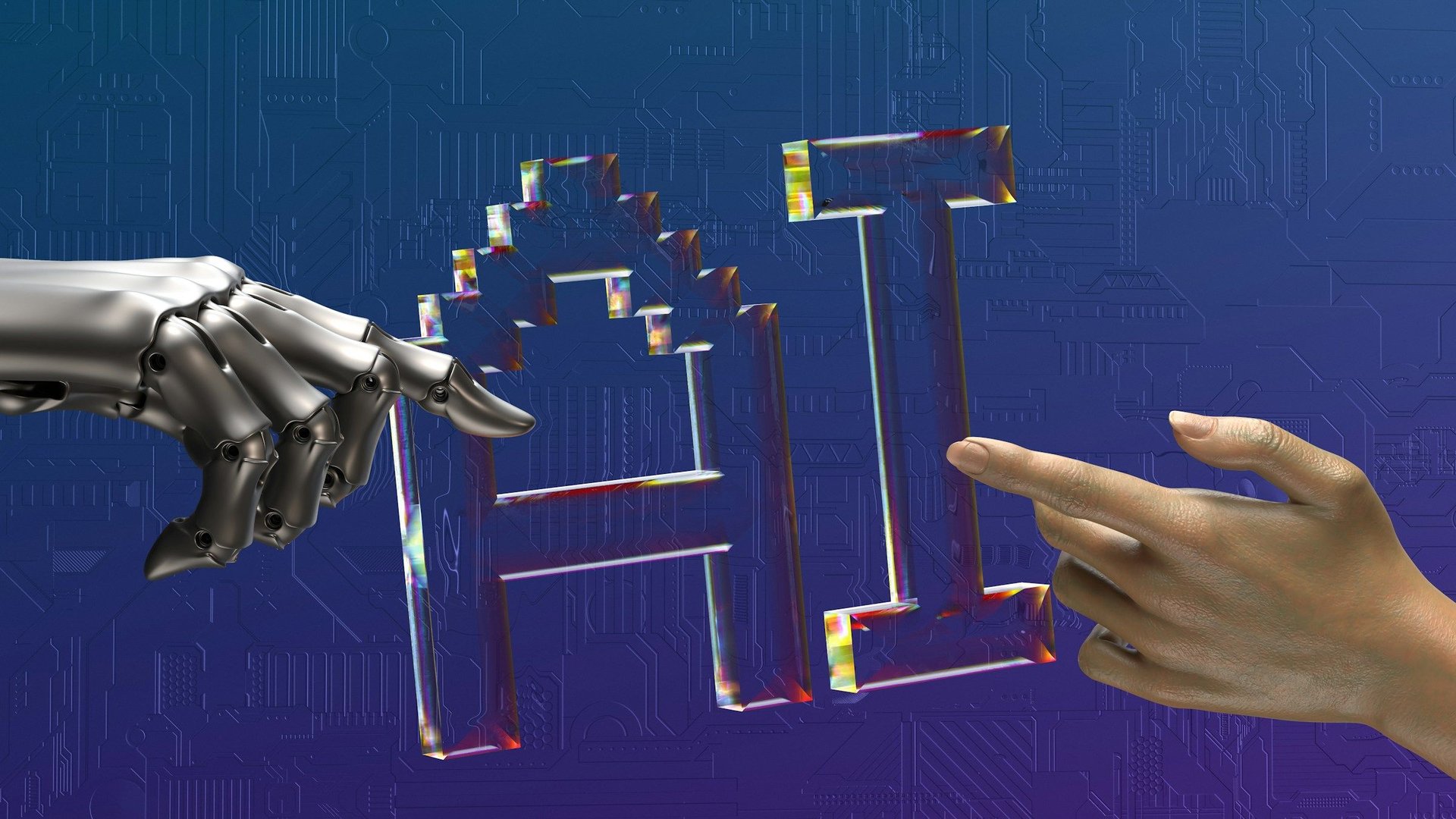
AI music tools learn to create music by analyzing vast amounts of existing songs and compositions. This training data often includes copyrighted music. When these systems generate new music, it raises ethical questions about originality and copyright. Are these tracks fresh, unique creations or simply remixes of existing works?
This distinction is crucial since AI-generated music can inadvertently replicate melodies, rhythms, and stylistic elements from existing songs without explicit permission. If a child learned to create art by studying the works of a particular artist and then produced a piece that closely mirrored that artist’s style, we would hardly consider the result an original work of art. As we continue to explore the capabilities of AI in music, we must ensure that innovations do not infringe on the creative rights of human artists.
The question of originality leads to another complex issue: Who owns AI-generated music? Traditional copyright law is based on the concept of human authorship. But AI-generated content disrupts this framework. Machines cannot hold copyrights. So, who owns the rights to music produced by AI? Should they be assigned to the developers who create the algorithms?
To the users who provide creative prompts? Or should AI-generated works remain outside the scope of copyright protection altogether? The absence of clear legal guidelines leaves many stakeholders uncertain about protecting intellectual property while encouraging technological progress in music creation.
AI-generated music raises significant ethical and legal questions about the nature of creativity and the role of human artists. While these technologies can enhance the creative process by providing musicians with new ways to compose, experiment, and refine their work, there’s a growing concern that AI might eventually supplant human musicians altogether. This could lead to diminished appreciation for the unique emotional depth and cultural significance that human artistry brings to music.
AI music tools can produce new compositions rapidly and at scale, often using training data that includes copyrighted material without explicit consent. This raises the risk that AI-generated outputs may infringe on existing rights, creating a legal grey zone where it is unclear how to license and monetize such content fairly.
AI music tools can generate ideas, suggest harmonies, or even produce entire tracks, acting as collaborators that expand artistic possibilities. Platforms prioritizing transparency in how AI models are trained set a crucial precedent by ensuring that the data used respects copyright laws and the rights of original creators. By openly disclosing the sources and methods behind AI training, these platforms foster trust among musicians and audiences alike.
This transparency not only demystifies the AI process but also helps maintain a fair environment where artists retain control over their contributions and are assured of receiving appropriate recognition and compensation. SendFame stands out as one of these forward-thinking platforms dedicated to promoting the ethical use of AI in music by upholding transparency, respecting artists' rights, and fostering a balanced creative ecosystem.
Equally important is the focus on building a sustainable music ecosystem that balances technological innovation with respect for human creativity. Ethical AI initiatives emphasize that AI should be a supportive tool that enhances the artistic process rather than replacing human musicians. This approach encourages collaboration between artists and AI, allowing creators to explore new musical possibilities while safeguarding their intellectual property.
By embedding respect for creative rights into AI development, the music industry can nurture a future where technology and artistry coexist harmoniously, ensuring that artists thrive in an increasingly digital world.
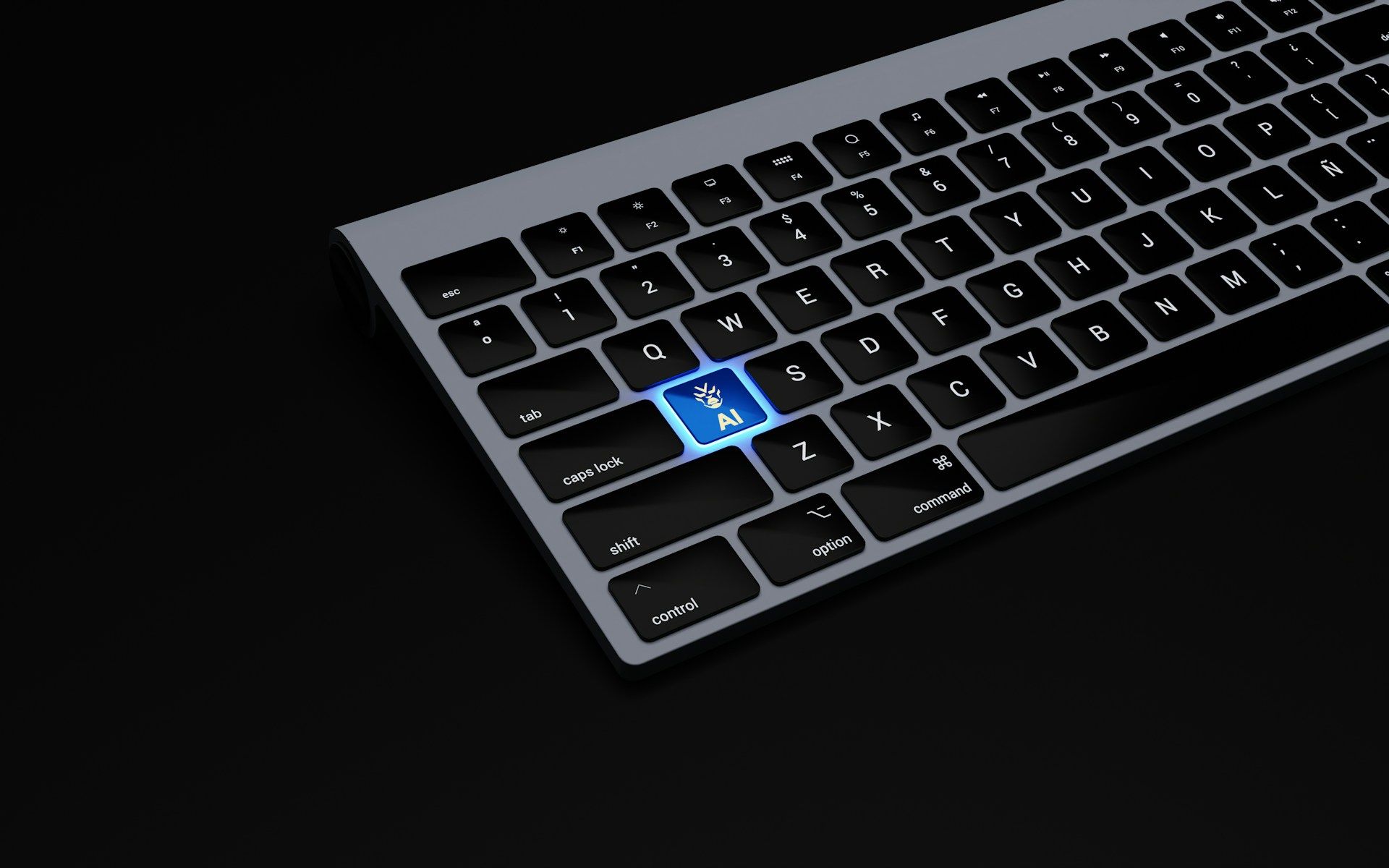
AI-powered lyric generators have swiftly become indispensable allies for contemporary songwriters. They transform the creative process by enabling the rapid crafting of lyrics that resonate deeply across diverse genres, including R&B, pop, and beyond. These intelligent tools analyze vast datasets of existing music and language patterns to produce authentic, emotionally charged lyrics that capture nuanced storytelling elements.
By offering a broad spectrum of thematic ideas and structural frameworks, AI helps artists break through creative blocks, encouraging experimentation with narrative styles and emotional depth that might otherwise take hours or days to develop. This fusion of technology and artistry allows songwriters to explore new lyrical territories quickly and flexibly.
Platforms like Soundverse AI exemplify how AI can smoothly generate entire lyrical compositions alongside vocal melodies, which creators can then tailor to preserve their unique voice and artistic identity. This collaborative workflow accelerates the songwriting timeline without sacrificing authenticity, allowing musicians to focus more on emotional expression and less on mechanical drafting.
Industry research highlights that over half of today’s songwriters integrate AI lyric generators into their creative toolkit, resulting in a 40% reduction in song completion time. AI-generated lyrics have passed human authenticity tests in nearly seven out of ten cases, signaling a future where human and machine co-creation becomes the norm rather than the exception.
The evolution of AI in music now extends far beyond lyricism into the scope of adaptive soundtracks, dynamic compositions that respond in real time to the listener’s environment, mood, or interaction. This technology is particularly transformative in immersive media such as video games and virtual reality experiences, where soundtracks can shift fluidly based on gameplay or user behavior, creating a deeply personalized auditory journey.
AI enhances emotional engagement and immersion by tailoring musical elements like tempo, instrumentation, and intensity to contextual cues, making the listening experience more interactive and meaningful. This adaptive approach redefines how audiences connect with music, turning passive listening into an active, evolving dialogue between the artist and the listener.
In parallel, multimodal AI art integrates music with complementary sensory modalities such as visuals, motion, and tactile feedback, crafting holistic artistic experiences that blur the boundaries between sound and sight. These multisensory creations leverage AI’s ability to synchronize audio with visual elements, producing immersive environments that captivate audiences on multiple sensory levels.
This convergence of modalities enriches artistic expression and opens new avenues for innovation in performance art, digital exhibitions, and personalized entertainment. As these technologies mature, they promise to transform the cultural landscape by offering deeply customized, multisensory music experiences tailored to individual preferences and contexts.
The adoption of AI tools in music production and mastering has reached a significant milestone, with approximately 60% of musicians now utilizing these technologies to enhance their creative workflows. AI-driven plugins and neural network-based audio tools provide real-time re-synthesis and sound manipulation capabilities previously accessible to highly trained audio engineers.
These advancements enable producers to experiment with novel sound textures, automate complex mixing tasks, and achieve professional-grade mastering results more efficiently. By streamlining these traditionally time-intensive processes, AI allows artists to focus more on creative decisions and less on technical minutiae, democratizing access to high-quality music production.
Furthermore, the widespread integration of AI in production workflows lowers the barriers for emerging artists and hobbyists, allowing them to produce polished, commercially viable tracks without extensive technical expertise or costly studio resources. This democratization fosters a more diverse and vibrant musical ecosystem, where creative vision rather than technical constraints drives innovation.
As AI continues to evolve, its ability to assist in generating artwork and visual accompaniments further complements the audio production process, enabling holistic creative projects that combine sound and imagery smoothly. The result is a future where musicians of all levels can equip AI with the power to bring their artistic ideas to life with unprecedented ease and sophistication.
Artificial intelligence is set to transform the music production process by acting as an intelligent collaborator that supports artists throughout their creative journey. Instead of replacing human creativity, AI is a powerful assistant that can generate fresh ideas, suggest harmonic progressions, and refine song structures, enabling musicians to experiment more freely and efficiently.
This synergy between human intuition and machine precision allows creators to focus intensely on emotional storytelling and artistic expression. At the same time, AI handles the more technical and repetitive aspects such as mixing, mastering, and sound design. The result is a hybrid creative environment where innovation flourishes, and production timelines are significantly shortened without compromising quality.
Moreover, AI-powered tools are becoming increasingly sophisticated, offering real-time feedback and adaptive suggestions that evolve alongside the artist’s vision. These advancements democratize music production by lowering the technical barriers traditionally associated with professional-grade recording and editing. Regardless of their background or resources, musicians can now access AI-driven platforms that streamline complex workflows, making producing polished tracks from home studios easier. As AI continues to mature, it will foster a collaborative ecosystem where human creativity is amplified by intelligent automation, ultimately transforming how music is conceived, crafted, and perfected.
Music distribution is transforming profoundly, fueled by AI-driven algorithms that optimize how songs reach listeners worldwide. Over half of the most-streamed tracks owe their prominence to AI-curated playlists and personalized recommendation systems, which analyze listener preferences, behaviors, and contextual data to deliver highly targeted content.
This data-centric approach ensures that music is discovered more efficiently and resonates deeply with individual tastes. As AI technologies advance, these distribution mechanisms will become even more precise, enabling artists and labels to connect with niche audiences and maximize engagement in ways previously unimaginable.
In addition to enhancing traditional streaming models, AI is opening the door to innovative business opportunities such as AI-generated sync licensing, where music tailored by AI can be instantly matched with visual media like films, advertisements, and video games. This capability accelerates the licensing process and introduces new revenue streams for creators, while offering brands customized soundtracks that align perfectly with their messaging.
The smooth integration of AI analytics and creative automation will characterize the future of music distribution. This will make it easier for artists to navigate the complex digital marketplace and for listeners to discover music that genuinely speaks to them.
AI’s ability to curate and personalize listening experiences dramatically reshapes how audiences consume music. Studies indicate that nearly three-quarters of internet users rely on AI-powered platforms to discover new music, highlighting the growing trust in machine-driven recommendations.
Furthermore, 82% of listeners cannot reliably differentiate between AI-generated compositions and those created by human artists, underscoring the sophistication of AI’s creative output. This trend points toward a future where AI produces music and tailors it dynamically to fit the listener’s mood, activity, or environment, offering a highly customized and immersive auditory experience.
This personalized consumption model transforms passive listening into an interactive, adaptive experience. AI can modify playlists in real time based on biometric data, location, or weather conditions, ensuring that the soundtrack perfectly complements the listener’s current state. Beyond individual enjoyment, this evolution fosters deeper emotional connections between audiences and music, as AI curates soundscapes that resonate on a personal level.
As these technologies evolve, they will redefine the relationship between music and its consumers, making every listening session a unique, context-aware journey that blends human emotion with artificial intelligence.
SendFame is emerging as a pioneering force in the rapidly evolving landscape of AI-driven music innovation. By smoothly integrating state-of-the-art technologies such as AI-powered lyric generation, advanced vocal synthesis, and dynamic adaptive soundtracks, SendFame offers creators an unprecedented toolkit to push the boundaries of musical creativity.
This platform accelerates the production process and strongly emphasizes authenticity, enabling artists to craft original works that resonate emotionally while benefiting from AI’s efficiency. SendFame’s dedication to ethical AI practices ensures that technology is a supportive partner rather than a replacement, preserving the essential human element that defines truly impactful music.
As artificial intelligence continues transforming every aspect of the music industry, from the initial spark of songwriting through production, distribution, and listener engagement, SendFame is strategically positioned to lead this transformative wave. The platform allows artists and music businesses to leverage AI’s capabilities fully, opening new avenues for creation, sharing, and monetization that were previously unattainable.
By championing innovation with a human-centered approach, SendFame is shaping the future of music and fostering an inclusive ecosystem where creativity and technology coexist harmoniously. It sets a new standard for how music is made and experienced in the digital age.
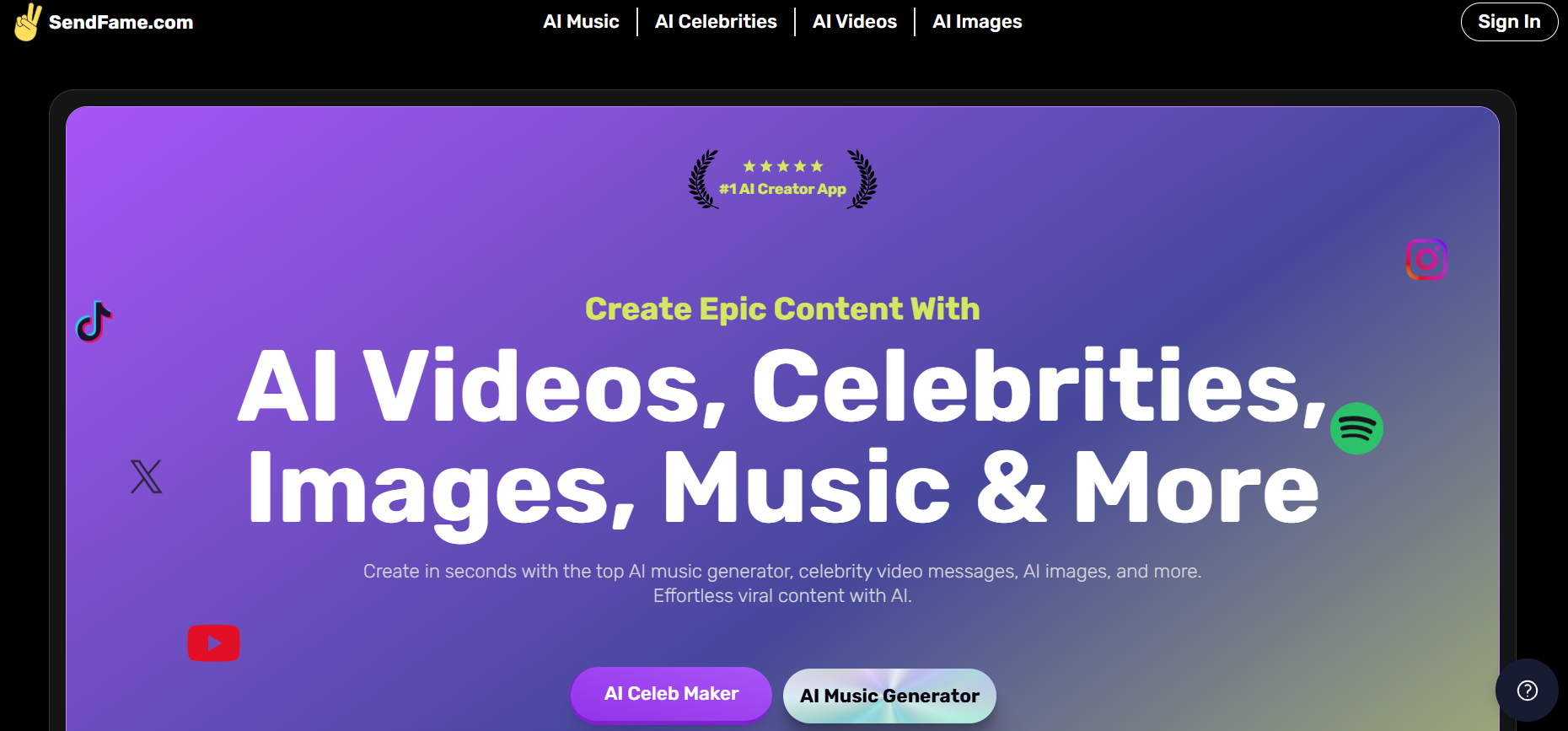
To get started with AI music at SendFame, visit the AI Music Generator studio and access the various features. From here, you can create music from a simple text prompt in under a minute.
The first thing you can do is enter a description, mood, or lyrics to guide the AI. The platform analyzes your input to compose music that matches the tone and style you envision.
Next, you can customize your track by choosing from various genres, such as rap, country, rock, hip-hop, worship, etc. You can specify mood settings like hype, dark, smooth, or love to shape the song's atmosphere.
You can also use the AI Lyrics Generator to produce original lyrics or input your own. The AI can generate vocals and harmonies, creating a song with voice and instrumental accompaniment.
Finally, enhance your track with an AI-generated music video and album cover crafted from your initial prompt to provide a cohesive artistic package.
SendFame is a powerful tool that allows users to create stunning, hyper-realistic AI covers. The software can generate videos, music tracks, and images featuring your favorite celebrities in minutes. For example, you can create a personalized video of a celebrity delivering a message for a friend or craft an original song with vocals that sound like a chart-topping artist performs them. With SendFame, the creative possibilities are endless!
Create Epic
SendFame